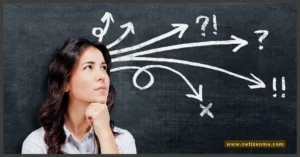If equilibrium GDP falls below potential, how and why government transfer payments would change?
Suppose that the federal budget is balanced when GDP is at potential GDP. If equilibrium GDP falls below potential, how and why government transfer payments would change; how and why tax receipts would change; how and why the budget would change?
Several factors, including tax revenue, government spending, and the state of the economy, determine the federal budget. When economic activity is strong, tax revenue increases, and government spending declines, resulting in a surplus. Conversely, when economic activity is weak, tax revenue decreases and government spending increases, leading to a deficit. The size of the federal budget deficit or surplus significantly impacts the overall economy. Whenever the government has a deficit, it must borrow money to cover the shortfall. This borrowing can lead to higher interest rates, inflation, and increased government debt. If government debt becomes too high, it can crowd out private investment and lead to an economic slowdown.
On the other hand, a surplus allows the government to pay down debt or save for future needs. Surpluses are also used to fund tax cuts or new government programs. The state of the economy has a significant impact on the federal budget. A strong economy boosts tax revenue and reduces costs for programs like unemployment insurance. A weak economy does the opposite. Recessions can also lead to an increase in mandatory spending on programs like food stamps and Medicaid. Similarly, booms can lead to decreased spending on these programs. The federal budget is also affected by changes in interest rates and inflation.
How and why would government transfer payments change if equilibrium GDP falls below potential?
If the equilibrium GDP falls below potential, government transfer payments would likely increase to help alleviate the negative effects of the economic downturn. Specifically, means-tested government programs like food stamps and unemployment insurance provide direct assistance to those who have lost their jobs or have otherwise been affected by the recession. In addition, the government may also increase spending on infrastructure projects and other stimulative measures in order to help jumpstart the economy.
If equilibrium GDP falls below potential, how and why tax receipts would change?
If the equilibrium GDP falls below potential, tax receipts will likely decrease as businesses and consumers tighten their belts. Lower tax receipts would mean less revenue for the government to invest in public services and infrastructure, which could further hinder economic growth. In addition, businesses may be less inclined to invest and hire when the GDP is low, leading to fewer jobs and lower wages. This would reduce household income and spending, in turn lowering tax receipts. Consumer confidence may also take a hit, leading to even less spending and tax revenue. There are a variety of reasons why equilibrium GDP could fall below potential. A recession is one possibility, as is a period of low productivity growth. Structural economic changes could also lead to lower potential GDP, such as an ageing population or a declining manufacturing sector. Whatever the cause, lower tax receipts can have serious implications for the government’s ability to function and provide services to its citizens. As a result, it is crucial to monitor potential GDP and take steps to promote economic growth if it starts to flag.
check our other articles on Macroeconomics
If the equilibrium GDP falls below potential, how and why would budget change?
If the equilibrium GDP falls below potential, the budget will have to be changed in order to correct the situation. The main reason for this is that the government will need to either increase spending or reduce taxes in order to stimulate economic activity and get the economy back on track. There are a few different ways that the government can go about this. One way is by increasing government spending on things like infrastructure or education. This will help to create jobs and get money circulating through the economy again. Another way is by reducing taxes, which will put more money into people’s pockets and encourage them to spend more. The exact budget changes that need to be made will depend on the specific situation. However, if the equilibrium GDP falls below potential, the budget will have to be adjusted to get the economy back on track.
If the equilibrium GDP falls below the potential GDP, this could lead to a recession. Recessions are periods of negative economic growth where GDP falls for two consecutive quarters. A recession can lead to a variety of problems, such as higher unemployment, lower wages, and decreased spending.
Additional reading material suggestions on government budgets, fiscal policies, and the impact of government borrowing if equilibrium gdp falls below potential:
Lumen Learning. (n.d.). Recessionary and Inflationary Gaps in the Income-Expenditure Model | Macroeconomics.
masterclass. (2022, October 13). Economics 101: What is potential GDP and why does it matter in business and economics? masterclass.com.
Greenlaw, S. & Shapiro, D. (2017). Chapter 11 | The aggregate demand/aggregate supply model. In Principals of macroeconomics 2e. Openstax. Licensed under CC-BY 4.0.
- 7 Winning Employee Engagement Strategies

- How American Express leverages diversity

- Techniques to Shift from Individual to Corporate Foresight

This article is written by:
This article is written and edited by in-house writers and editors. Knowledge Netizen editorial team is committed to providing accurate and informative content. You can cite our articles under the author name "NetizenMe"






